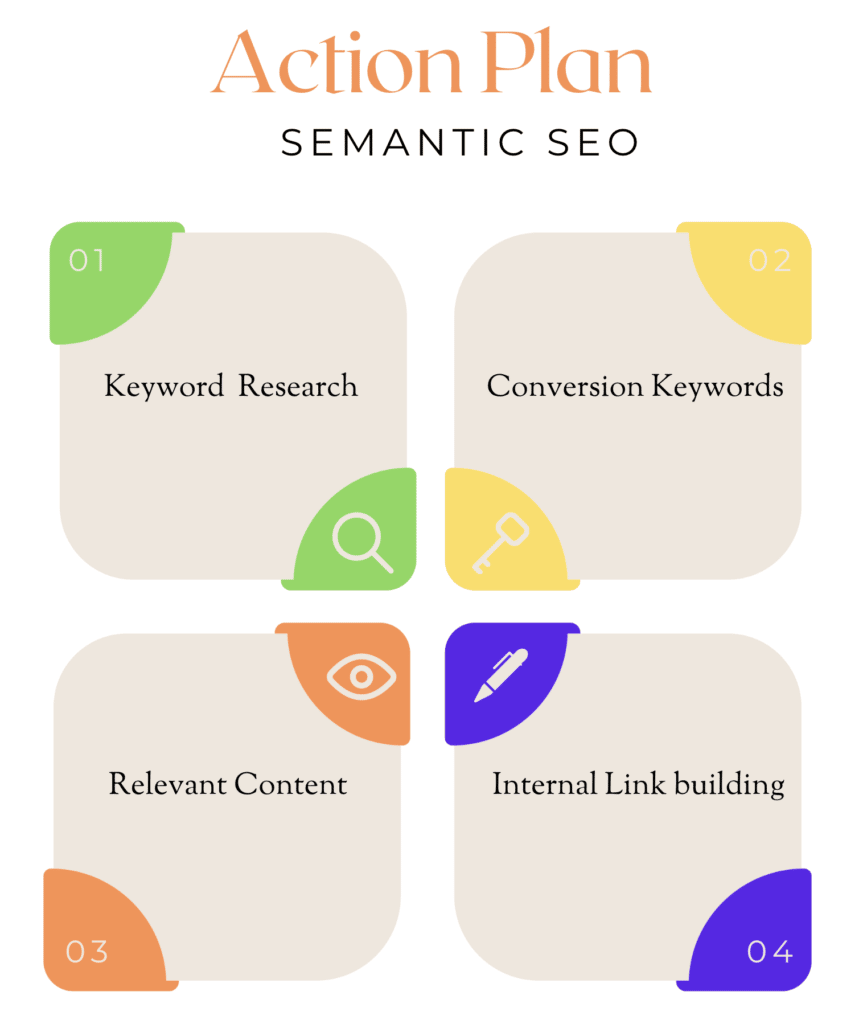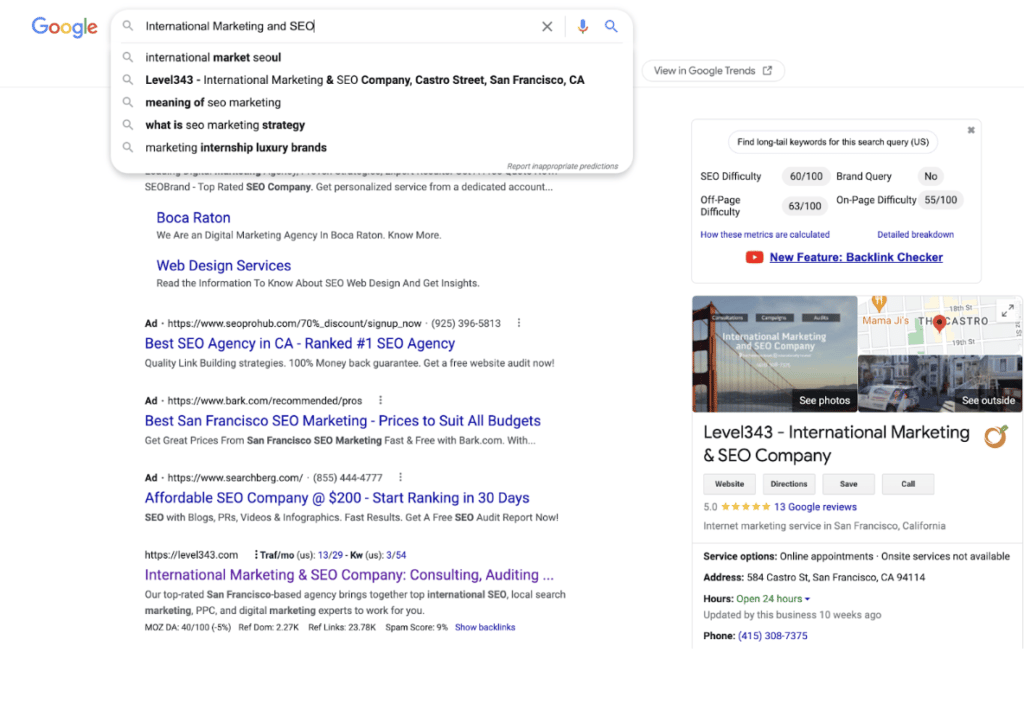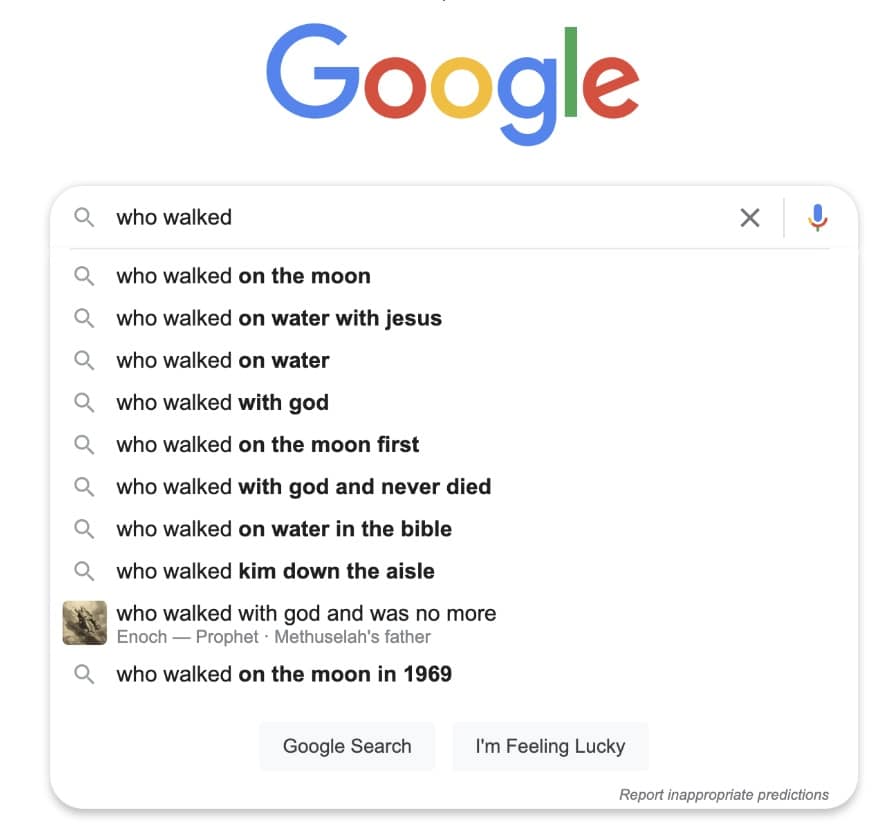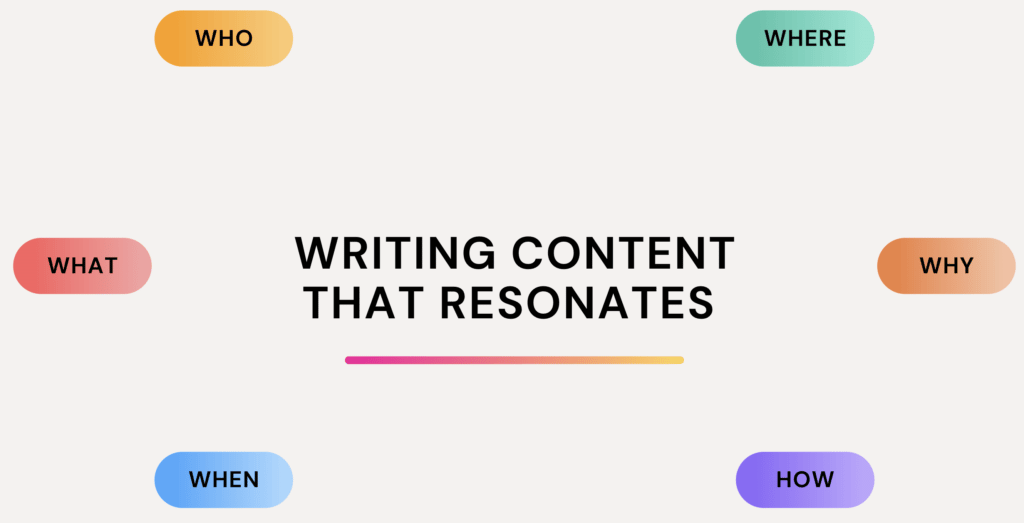At our core, we all want to feel like we belong. We want to be understood and have our needs met. These innate needs are why promoting your site with semantic SEO and search is a game changer.
Working closely with a variety of local and enterprise clients it’s one of the many conversations and strategies we’ve been discussing lately, and it’s one of the reason I had to write this article. Explaining why and how seemed daunting, especially when SEO has changed the way people search and view searching through the years.
Semantic SEO helps return relevant and almost magically accurate results by presenting users with the information they’re looking for without necessarily requiring them to search for a precise combination of keywords.
I don’t specialize in semantic SEO. However, I’ve asked a few experts to help me explain some of the more challenging aspects of how semantic search, entities, and your online footprint are connected.
Semantic SEO: How to Bring in Qualified Leads and Customers
Marketing directors, branding consultants, in-house copywriters–if you work online, and you want a successful marketing campaign, you know that semantic SEO is the future of search and how we present our business and websites moving forward. Here’s how it works:
Rather than simply looking for matches, which is possible with lexical or keyword searches (depending upon how you want your results), semantic searches rely heavily on context and meaning to find the best answer for a specific query–and this means going deep into the content!
Let’s explore how semantic SEO can help with lead generation in your web pages, with content marketing, internal links, link text, search terms, search queries, and even how to measure a successful campaign. This article is all about how you embrace semantic SEO in order to get your lead qualification and how you choose to use it.
What Is Semantic SEO?
In simple terms, semantic SEO involves understanding user intent and providing results that match those intentions. This search relies on artificial intelligence (AI) to interpret your questions and return relevant results. Another way to think about it is to optimize your content for topics instead of keywords or phrases.
With each new update, search algorithms are transitioning from simply matching words from a search with words on a webpage to understanding user intent and content. So, instead of your keyword ideas and keyword research consisting of a list of synonyms, you now need to provide answers to a full range of questions related to your content, product, service, or brand awareness, as well as answers to the original question.
Here’s an example:
In the “old days,” keyword research and human language or natural language for a dog collar website would often contain a list of words and phrases:
- dog collars
- collars for dogs
- puppy collars
- collars for puppies
- black dog collars
- collars for small dogs…
You would then use these phrases to write page after page of dog collar content.
Today, rather than writing about dog collars. You include other topics on your site that support your primary entity: the dog. So, you write about all things dog-related–from their breeds to training, collars, etc. The result is not just the page that discusses dog collars but a comprehensive dog resource filled with answers to all questions.
Results Are No Longer Useless
Remember how search used to give the user unnecessary or even useless information? For example, when I searched for a pizza, I didn’t want recipes or nutritional value information. I wanted to order a pizza.
Now, thanks to NLP (Natural Language Processing) and AI that pairs content with user intent, we get the pizza results we want: something to eat and order.
Today, users interact with their mobile/desktop to search in a more personalized manner. Therefore, as a business owner, you must go beyond giant collections of keywords to focus on the topics and key phrases your users use.
Remember: one of the main reasons people use search engines nowadays is to find information. But what are they really looking for? That’s what you need to prepare, target keywords and organize your sites for.
Your Business and Semantic SEO
As the old saying goes, “so many questions, so little time.” But here are some questions I’ve been asking:
- How does semantic SEO affect you and your business?
- How can you use semantic SEO in a marketing campaign?
I have many more questions, but for brevity (insert laughter here), I asked a few friends for insights along the way.
How Does One Optimize A Website With Semantics In Mind?

To start, content needs to be honed with intent in mind. It should answer questions while integrating seamlessly with all the other related pages–something few people did ten years ago.
I asked a friend, colleague, and super smart lady, Kristine Schachinger, her thoughts.
How does one optimize a website for their business with semantics in mind? Should you update old articles and content? Should they approach keywords differently? Or should they leave them alone and just begin by adding new content?!?
User Intent
“If a site has existing content, the site owner may want to review it to see how well it meets user intent. However, I would not change it for the sake of changing it because content is more than just content when it comes to search engines. You could change something you did not intend to change and affect your traffic and revenue.
For new content, sites should take the opportunity to move away from the strict keyword modeling of the past and expand to query research.
Why? Google no longer uses strict keyword modeling. It uses machine learning to understand content better contextually and semantically.
For instance, if I write a page about all the Marvel movie characters, Google knows I am talking about Marvel characters without ever using the phrase on the page.
How? Google uses the Knowledge Graph and entity(nouns) relationships to better match user intent. You can use this to your advantage by using entities and related entities on a page.
Query research
Query research is also great for discovering common questions related to a user’s search.
Google’s use of Natural Language means it loves questions. Why? Because questions are easy for machine learning to understand. So, ask a question and answer it in the first paragraph when it fits naturally for an added benefit. Don’t force it.
Remember: write holistically, with breadth and depth, and add questions when it works.
Another friend, respected international SEO consultant and colleague, Mariachiara Marsella, also shared her thoughts on this particular topic.
What is the number one challenge for websites that are old? Do they need to re-write their content? What can I do to make an old website work better for semantic results?
I believe that there are two matters here. Regardless of semantic results, according to the just refreshed Quality Raters Guidelines, “unmaintained/abandoned old websites or unmaintained and inaccurate/misleading content is a reason for a low Page Quality rating” (when a query demands recent content, page 143). In addition, on page 23 they say: “High E-A-T financial advice, legal advice, tax advice, etc., should come from trustworthy sources and be maintained and updated regularly.”
In short, SEOs are not making up these tasks.
Secondly, evergreen content has the opportunity to rank well on organic/natural search results if they are “well maintained.”
In the case of old websites, you can take a chance to review, update, and improve texts using structured data, too. With the word “improve,” I also mean to think about entities. Ask yourself: which is the main topic the article belongs to?
There Are At Least Four Things To Do:
- Map your content: web content, as text, videos, and images. Different content types answer different queries.
- Identify topics and decide if it is necessary to review the information architecture (without changing URLs, possibly).
- Identify entities and structured data.
- Download analytics and Search Console data to understand, for example, if you can better serve readers by merging articles.
Why go through all this (and so much more)?
Google “understands” that the content will be up-to-date and usable if you take care of your website. Imagine what would happen if you entered a shop and found most of the products were expired, and the shop assistant only speaks Sumerian?
There are, and there will be, so many websites like yours, but Google will pick up the best one.
How Does Semantic SEO Affect You and Your Business?
Semantic search and SEO turn your business and website into the answer to a customer’s questions. It, therefore, increases organic and referral (via backlinks) traffic while presenting you as an authoritative voice within your field. This, in turn, aids in building brand trust and customer loyalty.
Semantic SEO is quickly becoming the gold standard for both national and international marketing. The reason for this is simple: it allows companies to target their audience more precisely, resulting in increased traffic and conversions.
However, some Semantic SEO consultants are resistant to change. These consultants often come from a traditional marketing background and aren’t familiar with the latest technological advances. As a result, they rely on outdated methods. However, even these consultants are beginning to see the value of Semantic SEO.
While their approach may not be as sophisticated as that of their more up-to-date counterparts, they can still produce significantly better results than traditional marketing campaigns.
How Can You Use Semantic SEO in a Marketing Campaign
Google puts tools like Google autosuggestions, Google autocomplete at your fingertips that can give you oodles of user intent insights if you look at what questions people ask.
Autosuggest and autocomplete are often used interchangeably, but there is a subtle difference between the two. When going through Autosuggest it will provide you with words based on what search term has been typed so far; however in contrast to this feature of Google’s web browser (autosuggest), an auto complete function would automatically fill out your entry for any given word or phrase depending upon its own internal dictionary meaning- not just those matching exactly as entered thus making it easier than ever before!
You Can Use Google Autocomplete to Better Your Semantic SEO in Two Ways:
- Google uses autocomplete to predict what you’re going to search for based on your previous searches, as well as the collective search history of all Google users. Called predictive search, you can optimize your content for these important terms.
- Second, you can use Google Autocomplete to find related keywords to expand your keyword list and ensure that your content covers all the relevant topics.
- Autocomplete and predictive search are helpful for driving retention because they reduce the bounce rate due to user confusion. For example, it can be frustrating if a customer searches “online shopping sites” but gets directed right away without having found what she wanted or needed. In our case, it’s obvious what we’ve been searching for and Google remembers.

- Autosuggestions help people find relevant results faster, which means they spend less time waiting around on hold with customer service agents when they might only need one click of an accept button.

Another great way to utilize semantic SEO is to look at the Users Also Search autocompletion. This feature will show you where and how to integrate related entities to expand and improve your SEO strategy further.
Have you ever tried to search for something on Google and had no idea what the heck your computer was trying to tell you? Well, there’s another amazing tool that can help with this called “Google Suggest.”
Google Suggest
When you enter your desired keyword or phrase into the search box, Google Suggest runs it against algorithms, databases, the popularity of search terms, your location, and search history. It then provides alternative search terms you can click on instead of a wide range of websites that may or may not satisfy your query.

This function has changed over time, but the intention has always been to make the search experience more efficient and easier for the user. Users can choose to accept or ignore Google Suggestions, but it has become an integral part of the Google search experience.
So, if you take time to learn and understand the basics of semantic web technology, you can use these concepts to strengthen your SEO strategy. But don’t expect it to happen instantly. Successful SEO takes time, effort, and commitment to achieve results.
I asked another friend Anne Smarty – How would she inform and update sites for her clients and what would she tell them?
I usually recommend updating something that used to drive traffic (or still is driving traffic). This way, you have data to rely on. You can search for those keywords and identify what your old article is missing. Google SERPs give lots of clues as to what their users are looking for, like all kinds of carousels, featured snippets, and “People Also Ask.” That’s lots of content to add! https://www.practicalecommerce.com/seo-updating-content-for-higher-click-throughs
These aren’t the only tools available to you, of course. Anne recommends some other tools Google offers to website owners:
Google Analytics is a good tool to use to find those old articles with traffic. For more recent content, Search Console is easier.
Extra tip: if you’re looking to delve a bit deeper into reader intent for your site, Semrush has a new tool that will help you understand how to analyze search intent instantly.
You can also use more automated tools like WooRank and WordLift.
The First Step To Using Semantic SEO
The easiest way to get started is to divide your work into two stages: content creation and optimization. During the content stage, you should focus on creating high-quality articles that provide unique information for readers to help rank them higher in the search engine results pages (SERPs).
Optimizing Your Content and Site
Now that we’ve established what and how semantic SEO can help your business, remember that rankings depend on the interconnectedness of your content. To optimize your website for semantic SEO, start by doing keyword research to find out what people are searching for. Once you know what keywords to target, create content that is informative and relevant to those keywords.
Writing Content That Resonates
Create a list of titles that answer the fundamental questions: Who, What, When, Where, and Why–also called the Five W’s. Remember your visitor are here because you’re resolving issues, answering their questions, or showing them how to navigate to their answer. For each question, create a quality, authoritative page that provides them with a solution.

Understanding User Intent
Let’s be clear: to understand user intent, you must learn how to satisfy your buyers and get into their emotional triggers, but also utilize semantic SEO to bring in more qualified leads and customers.
There are four main types of user intent: Navigational, Informational, Transactional and Commercial
- Navigational: The user is looking for a specific website or page. For example, if someone types in “Facebook” into Google, they are likely looking to go to the Facebook homepage.
- Informational: The user is looking to learn more about a topic. For example, if someone types in “What is semantic SEO,” they want to learn about semantic SEO and how to use it.
- Transactional: The user is looking to buy something or complete a task. For example, if someone types in “Buy Nike Shoes” They are looking to purchase Nike shoes.
- Commercial: They’re trying to find out more before they buy, they may even want to compare pricing.
As a business, it is important to understand what type of user intent your target market is searching for when looking for products or services like yours.
If you can align your content with the user intent of your target market, you will be able to bring in more qualified leads and customers who are interested in what you offer.
If you’d like to delve further into the intricacies of user intent, I can’t help but point to one of the greatest SEO’s thinkers of our time, Bill Slawski, who wrote, “A well formed query that helps search engines understand user intent,”as well as a plethora of other white papers on various aspects of search. However, for the sake of this article, you simply need to know that user intent and how you align your site with that intent matters.
High-Quality Articles
So, what is high-quality content exactly? It means writing clearly and concisely about things your audience will find useful and engaging. How? Here are some ideas:
First, start by doing your research. Know your audience and what they want to read about. Then, write in a clear, concise style that is easy to understand. Be sure to proofread your work for grammar mistakes and typos before publishing.
Avoid keyword stuffing, which is painful for readers and easily picked up by Google. Most importantly, the reader should get something out of it.
Make sure you present information in a hierarchy of the on-page SEO elements. For example, breadcrumb navigation, internal links, anchor text, and alt tags for images are all part of your final product.
Lastly, ensure these pieces of writing offer enough context, so they’re presented in ingestible chunks of data that can be enjoyed while having knowledgeable authorship at their fingertips when needed.
Semantic Analysis
Semantic analysis is all about tying ideas back into the knowledge graph and connecting them with other related content authoritatively. Think of the knowledge graph Google creates like a painting. Each topic is an object in the painting.
Google examines (crawls) the objects, identifying each one and learning about them before drawing lines between them like brushstrokes. But it isn’t just about making connections, but also the types of connections.
Google uses E-A-T (Expertise, Authority, Trustworthiness) to judge your website’s quality, which ultimately impacts your rankings. This technology incorporates aspects like speed, topic authority, security, and user experience, which are essential when generating leads or conversions for sales opportunities online!
In other words, if you want your website to rank well in Google, you need to make sure it has strong Expertise, Authoritativeness, and Trustworthiness. Fortunately, there are several things you can do to improve your site’s E-A-T score.
Expertise is a measure of the skill you have in your field. One way Google can measure expertise is by examining links and citations from other sites. When they link or cite you, it suggests that the author feels your content is trustworthy and accurate.
And finally, make sure that your content looks at problems from multiple angles to create a comprehensive conversation. While this may seem silly, it will help people believe you and trust in the brand they’re buying from.
Authorship and Expertise are Important
Authority needs to be nurtured continuously. Because even though we may not have an actual physical presence, our online footprint still matters just as much, if not more, than ever before. Therefore, make sure to link to other quality sources and update your content regularly. And don’t forget to manage your online reputation.
Remember that your brand is your identity on the Web. One of my favorite quotes about brands is from Scott Cook, “A brand is no longer what we tell the consumer it is.
It is what consumers tell each other it is.” It’s how people know and trust you and your brand. Monitor what others are saying and pay attention to how they interact with your brand.
Quality Always
Ultimately, quality builds trust. More people will come to your brand for information or advice as you create trust and visibility by consistently providing great content. Therefore, aim to become the one source they rely on most! Get involved in every conversation that can help build up even stronger relationships between each other through handy inputting abilities.
Maintain high standards of communication while still maintaining authenticity, which helps establish credibility as well ̶ all this builds real value into what matters most: You
Some may argue that this strategy doesn’t work, but I’ve seen it work on several sites with long-form articles. Regardless of whether you think it’s a viable option or not, look at how you can broaden the reader’s perspective and provide well-formed answers. That’s the ultimate goal.
Furthermore, when using the long form, you can add a ton of relevant internal and external links, which will make Google happy and give the readers the option to delve deeper.
Lastly, don’t forget to consider context. Semantic algorithms consider words and phrases together when deciding if they’re relevant. So, if you offer landscaping services, writing about landscaping makes you appear authoritative. One of our clients retired from landscaping in 2019, but our content development was so methodical when connecting the dots that his site still ranks today for some of his golden keywords.
Conclusion
Semantic SEO is one of the most critical aspects of a successful website. By understanding how semantic SEO works, you can help qualify leads before they even enter your site. You can focus on attracting users who are interested in what you have to offer rather than wasting time and energy on those who aren’t likely to convert.
Semantic techniques can be one of the most manageable, scalable, intelligent SEO strategies you can use when looking to enhance your response rates, conversion rates, and all your direct marketing and online needs.
Stay tuned – we have more information coming your way about how to use semantic SEO in conjunction with other digital marketing strategies!




































One Response